Videos & films
The MEP’s video and film collection brings together some one hundred works by international artists from the early 1990s onward, as well as documentary and experimental films on photography and its key figures. The artists’ videos are shown in exhibitions; the films are available free of charge for consultation in the museum library.
Artists’ videos
As the lines between different artistic disciplines become blurred, video has become an increasingly prominent medium in contemporary art. Many photographers have found it to be a new space for experimentation and expression whose versatility makes it possible for them to enrich their practice. The MEP’s video collection, which complements its vast collection of photographs, gives an important place to young artists as well as to those recently presented in its exhibition programme.
Selection
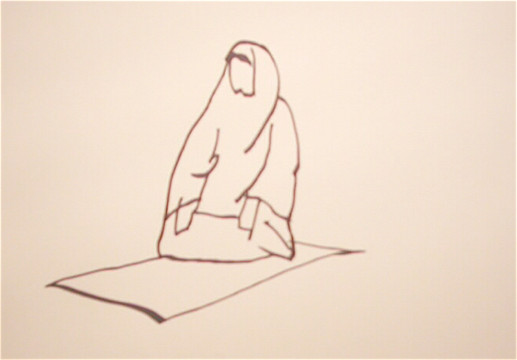
Les douleurs de ma mère, Adel Abdessemed, 2005
In Les douleurs de ma mère, Adel Abdessemed, a French artist of Algerian origin, a sequence of simple, phantomlike contour drawings depicts a mother figure in prayer. This animated film is made with coloured, felt-tipped pens.
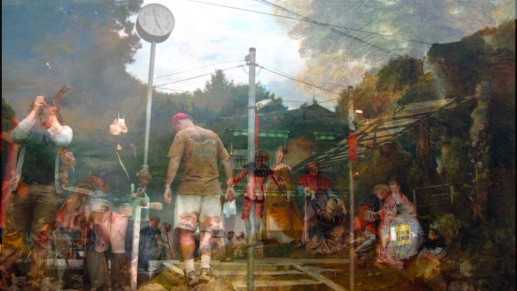
After Watteau / after Watteau, Léandre Bernard-Brunel, 2011
In Après Watteau / d’après Watteau, the artist Léandre Bernard-Brunel overlays the painting L’Embarquement pour Cythère (1717) by Antoine Watteau and the video of a contemporary street scene.

Subak, Marie Bovo, 2010
In Subak, the Spanish artist Marie Bovo films a watermelon hurtling down the winding streets in Seoul. Humanising the oval-shaped fruit, she turns it into someone comical and clumsy, colliding with objects along the way, hesitating, speeding up and ultimately exploding.
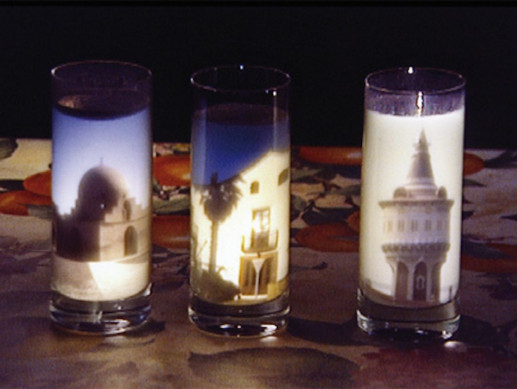
Bruits de surface, Silvie Defraoui, 1995
In Bruits de surface, Swiss artist Silvie Defraoui, a pioneer of video art, shows an image of empty, transparent glasses that are filled with milk; projected images gradually emerge in their whiteness. The glasses are then swept away, replaced and filled again, evoking our relationship with memory.

Les Hommes dans les draps, Alain Fleischer, 2000-2003
In Les Hommes dans les draps, Alain Fleischer, the French writer, photographer, artist, and filmmaker, depicts the ephemeral profiles of men appearing as shadows in the folds of a bedsheet, revealed in the light of the morning sun. Three-dimensional obstacles within the folds lead to flat images of cast shadows, creating an anamorphic illusion. The video explores the way images can be made and unmade, just as ghostly figures appear and disappear in our dreams while we sleep.

Un horizonte falso, Alberto García-Alix, 2014
In Un horizonte falso, Spanish photographer Alberto García-Alix, one of the key figures of the creative avant-garde underground from the 1970s and 80s in Madrid, proposes a long, spoken word poem overlayed on a series of his black-and-white images.

Projection, Laurent Grasso, 2003-2005
In Projection, French artist Laurent Grasso uses a long tracking shot to show a dense, threatening cloud rapidly invading the Paris streets. Accompanied by a dull, muffled roar, the cloud gradually envelops streets, buildings, cars and passers-by until it swallows even the camera.
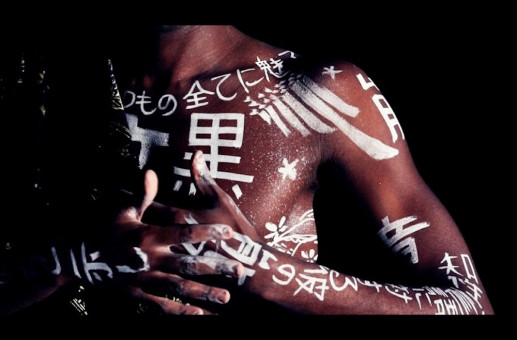
Yasuke Kurosan, Smaïl Kanouté, 2021
In Yasuke Kurosan, Smaïl Kanouté, a visual artist, dancer and choreographer, depicts the extraordinary story of a 16th-century African slave who was granted the exceptional status of a samurai warrior in Japan. The resulting choreographic work, a hybrid creation that draws its inspiration from several different cultures, was presented in the exhibition Yasuke Kurosan, le samouraï noir au Japon, in the MEP Studio in May 2021.

Waltz, Elena Kovylina, 2001
In Waltz (2001), a filmed version of a performance in Berlin, Russian artist Elena Kovylina invites spectators to dance with her. After each waltz, she downs a shot of vodka, becoming increasingly intoxicated and ultimately losing control.

Orage, Ange Leccia, 1999
In Orage (1999), French artist Ange Leccia gathers together successive recordings of violent and spectacular storm scenes, floor-to-ceiling, without beginning or end. This artist’s installations, in which smoke, fire, sea and sky evoke 17-century painting, demonstrate the visual power of metaphorical language.

Under Construction, Zhenchen Liu, 2007
In Under Construction, Chinese artist Zhenchen Liu shows us the remnants of a ghost town, in a video evoking the displacement of Shanghai’s residents and the destruction of entire districts by real-estate developers.

Hammam, Florence Miailhe, 1991
In Hammam, the painted animation by French artist and filmmaker Florence Miailhe depicts two young women visiting a hammam for the first time, losing themselves in a labyrinth of steam, showers and fountains.

Suzanne Walking, Julian Opie, 2005
In Suzanne Walking, British artist Julian Opie presents a continuous computer animation on a LED screen. The distinctive style of his thick, black lines is juxtaposed with the sensual movements of a woman walking, her back to the viewer.
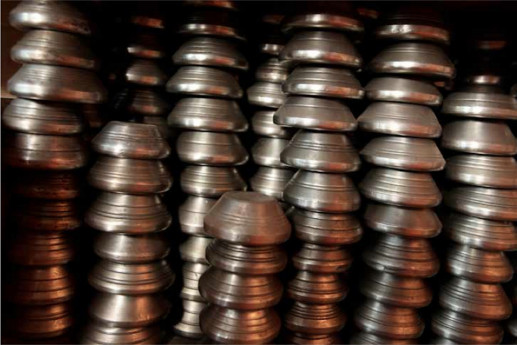
Mecha, Miguel Angel Rios, 2010
In Mecha, Argentinian artist Miguel Angel Rios presents the game of Tejo, Colombia’s national sport. as a metaphor for violence and the embodiment of war; here, the game calls to mind a battle in which peace has become impossible.

143 erotic positions, Pierrick Sorin, 2000
In 143 erotic positions, the French video artist Pierrick Sorin presents one of his short, comical narratives in his famous “optical theatres”. He appears here as a miniature hologram, posing nude on a tiny bed in supposedly erotic poses, with a long body pillow as his partner.

13 Pullovers, Erwin Wurm, 1991
In 13 Pullovers (1991), the Austrian conceptual artist Erwin Wurm convinced his friend Fabio to pull on multiple sweaters one after the other, bulking up and creating a kind of human sculpture. This work was presented at the MEP in the artist’s solo exhibition Erwin Wurm Photographs in March 2020.
Documentary and experimental films
F for Fontbuberta, Gerardo Panichi and Daniele Villa, 2005
In F for Fontcuberta, Gerardo Panichi and Daniele Villa question the relationship between nature and artifice, reality and fiction, in a fake documentary on the work of Spanish photographer Joan Fontcuberta, produced in close collaboration with the artist.
I’ll be your mirror, Nan Goldin & Edmund Coulthard, 1995
In I’ll be your mirror, Nan Goldin, in collaboration with Edmund Coulthard, expands her photographic work in a very personal film. Punctuated by poignant testimonies from her friends in the New York underground scene and including rare documents, this documentary gives new insight into the life of this American photographer.
Michel Journiac
In his actions, Michel Journiac, a pioneer of body art in France, performed provocative rituals that explore the limits of artistic practice. The film Messe pour un corps (1969) presents one of these filmed actions, in which he offers his audience a sausage made using his own blood.
Broadway by Light, William Klein, 1958
In Broadway By Light, considered the first Pop art film, William Klein follows his famous photographic project documenting New York with his first work in cinema, illuminated by the dazzling neon lights in Manhattan’s Times Square.
Mes Jambes, Pierre Molinier, 1965
In Mes Jambes, French artist Pierre Molinier appears in stockinged legs and stiletto heels, blurring his gender identity in a series of images in which only his legs are seen by the viewer. This rare document, filmed in Super 8, is the artist’s only cinematic work.
Circuss, Sarah Moon, 2002
In Circuss, French photographer Sarah Moon proposes a melancholy adaptation of Hans Christian Andersen’s fairy tale The Little Match Girl. This film is Moon’s first in a series of adaptations of Anderson’s tales that also includes La Sirène d’Auderville, inspired by The Little Mermaid, produced in 2007.
Manhatta, Paul Strand & Charles Sheeler, 1921
In the collaborative short film Manhatta, American photographer Paul Strand and American painter Charles Sheeler evoke the atmosphere of Manhattan in the early 20th century.
Johan Van der Keuken
In his two films L’enfant aveugle (1964) and Hermand Slobbe, l’enfant aveugle II (1966), Dutch filmmaker and photographer Johan van der Keuken questions the mystery of perception as experienced by the blind. The MEP collection includes more than 50 films by Van der Keuken, whose unique oeuvre does not belong to any particular movement or school.
Compilation by William Wegman, 1970-1978
In these works, American artist William Wegman uses his video camera like a sketchbook. Several of these exceptional short films star his famous dog Man Ray, a Weimaraner named after the famous Surrealist; in Microphone or Cape On (1970-1971), for example, this faithful companion is his main protagonist.